Have you ever wondered why there are so many Japanese food emoji as well as other Japan-specific emoticons?
The simple answer is emoji are a Japanese invention. Unlike the popular assumption that emo stands for “emotion”, emoji is actually a Japanese compound word, ‘e’ meaning picture and ‘moji’ meaning character, and we can thank the Japanese for not only their existence, but for many of these picture characters that are now global standard (although often misunderstood).
The history of emoji, however, is far more interesting than this simple explanation. Just how did Japanese food emojis make their way onto the world stage, why are there still so many Japanese emojis compared to other countries and cultures, and what do they actually mean?
And of all the things to include, why on Earth did the Japanese think an eggplant was so important to depict in emoji form? Hint: it wasn’t about just being a vegetable for the Japanese either!

Table of Contents
The origin of Emoji
The invention of emoji is usually credited to engineer Shigetaka Kurita and Japanese phone carrier Docomo, who in 1999 released a set of 176 emoji for their devices on i-mode, an “early internet” of sorts for mobile phones in Japan. However, like many things, the creative history of emoji is a little messier.
The very beginning of emoji can actually be traced back even earlier to the mid-nineties and pagers. In 1995, sales of pagers were booming and Docomo added a single heart feature that was an instant hit with Japanese teenagers. We could say that this was the very first emoji.
But the first emoji set was pioneered by rival Japanese mobile phone carrier Softbank, who on November 1st, 1997 released 90 emoji with their new J-Phone model (SkyWalker DP-211SW). The drawback was the emoji only worked with the DP-211SW, so unless you were conversing with someone who had the exact same model (which was challenging as the phone didn’t sell well), having access to these pictograms was essentially useless.
Therefore while Softbank had the first emoji set, its limitations meant that the feature didn’t get much attention and it was really Docomo’s release two years later that popularized the use of emoji in Japan, and probably why the continued misleading attribution that the Docomo engineer invented them, despite Kurita’s efforts to correct the record.
But Softbank’s emoji weren’t just relegated to the virtual trash can of emoji history. So popular had emoji become, that when Apple first tried to bring the iPhone to market in Japan, they were not successful because the Japanese were not interested in a phone that didn’t have emoji capability. It was actually the original Softbank set, from where the “pile of poo” emoji originates, that Apple used to develop emoji for iPhone, which was launched in the Japanese market in 2008.
How Japanese food emoji and others became international
Despite the popularity of emoji in Japan, there were still lots of problems with compatibility between carriers and devices. For example, what was a thumbs up on one device could show as a thumbs down on another, and it wasn’t until Google partnered with another Japanese telecom carrier KDDI AU, who had by this point also created their own emoji set, that things started getting resolved.
Essentially Google wanted to adopt the AU emoji set for use in Gmail and have the emoji work on any device. To make this process easier, they offered to fix the issues all three Japanese companies were having with compatibility by standardizing the coding, and in 2006 began converting emoji to private-use Unicode, the first step in what would later become the basis for submissions to the Unicode Consortium for international use.
Emoji at their inception were created by Japan for a Japanese market. At the time, no one imagined that emoji would become the global language it is today. Hence, the emoticons were created to depict daily Japanese life and culture, which has meant that many of the images have gotten lost in translation, have taken on new meanings in the online world, or are simply glossed over because they carry no meaning outside a Japanese context. Cue all those random symbols that you probably never use or look at!
So shouldn’t there be many more emoji by now, to represent all countries and cultures? Well, you’d think so, but here’s why not.
Why there are still so many Japanese emoji
When the international emoji keyboard was created by way of Unicode, the Japanese emoji were grandfathered in. Once in this system, they are not deleted and remain forever.
That’s why there are very strict rules and processes in place for considering whether to add new emoji, and why there are still so many Japanese emoji in comparison to emoticons from other countries and cultures.
This process is overseen by the Unicode Consortium, an international committee of tech company representatives and other global advisors, who decide whether an application for a new emoji is successful or not.
Critical factors are that the proposed emoji must not carry sentiments that can be covered by existing emoji, and cannot represent a brand or identifiable person, such as a celebrity. They also need to be uniquely identifiable at such a small size. Drinks, for example, are extremely challenging to get passed, as they often don’t look different enough that users will be able to differentiate them. Chile has been lucky to get mate passed, thanks to the fact it has a very distinctive cup.
Finland was the first country to make a successful bid. They were able to get the “sauna” emoji passed with changes. Instead of the two naked people that were in the initial application, it was allowed passage with a single person in a steamy room with towel (on some devices holding a ladle for creating the steam). They were also able to get “winter gloves” added after citing the lack of winter clothing options compared to the summer ones. Their application for a “rock band” emoji was denied, as the Consortium felt that the existing “rock on” emoji already covered that sentiment.
Interestingly, anyone, even private citizens, may lodge an application for a new emoji to the Unicode Consortium for consideration. So if there’s an emoji you’ve been pining for, you can submit your very own proposal for review.
The story behind Japanese food emoji
There are many Japanese food emoji (and some beverages) that you’ve no doubt seen on your device. Perhaps you’ve used some of them before. But do you know what they are or their intended meanings?
Here are some common Japanese food emojis and what they mean.
Strawberry shortcake
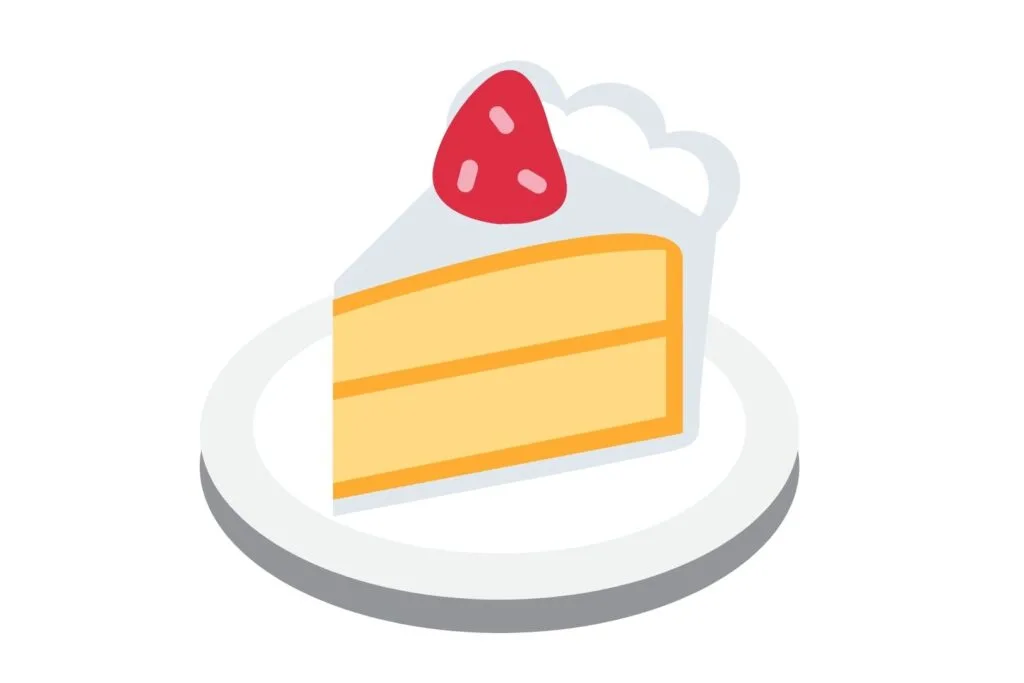
Strawberry shortcake might at first glance appear to be not very Japanese at all. However, if you’ve ever traveled to Japan you’ll have noticed that this cake graces the shelves of just about every cake shop and department store. When it comes to Western-style desserts in Japan, strawberry shortcake is the representative sweet.
This yellow sponge with whipped cream and strawberries took a foothold in the Japanese sweets scene post-WWII when ingredients like cream, sugar and butter along with refrigeration technology became more widely available.
Thanks to Japan’s preoccupation with this dessert, it’s now a part of daily celebratory texting as the “slice of cake” emoji.
Nabe
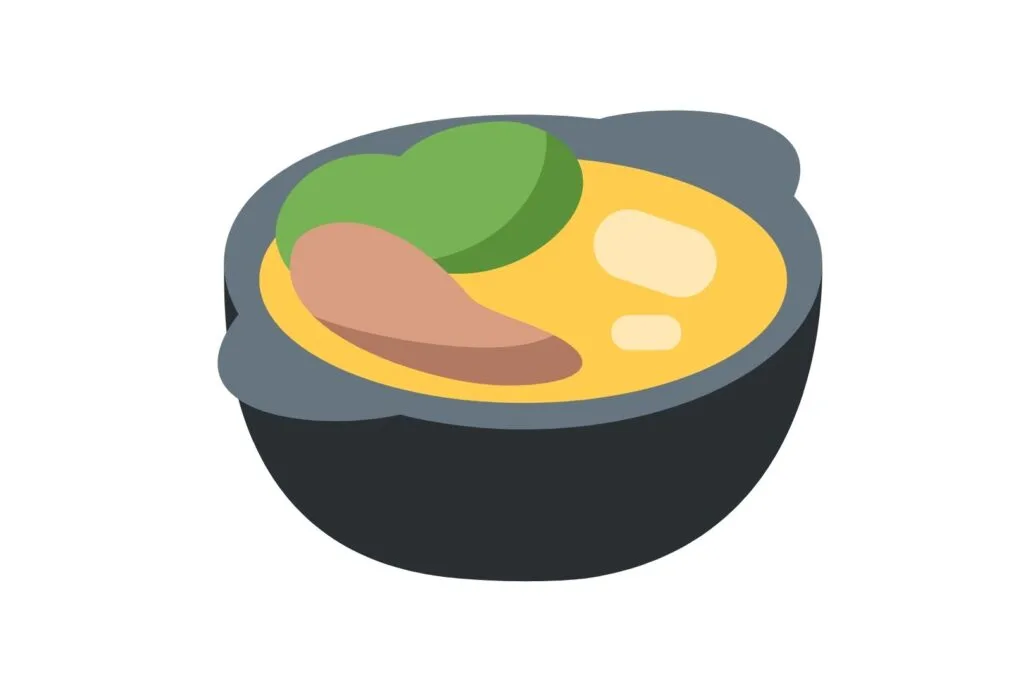
Referred to as the “pot of food” emoji, this one was created to represent nabe or Japanese hot pot, consisting of broth and various ingredients. Nabe is a classic winter dish in Japan that is easily thrown together and cooked in the one pot, which is also referred to as nabe (or donabe).
Pre-prepared broth is readily available at the supermarket along with packs that include pre-packaged and portioned ingredients. One of the best things about nabe is that it is completely customizable both with the type of broth you use (my favorite is kimchi) and the ingredients you decide to add. Typical nabe ingredients include cabbage, tofu, meat, oden (explained below), mushrooms, and kombu seaweed which is used to flavor the broth as it is heated.
Oden
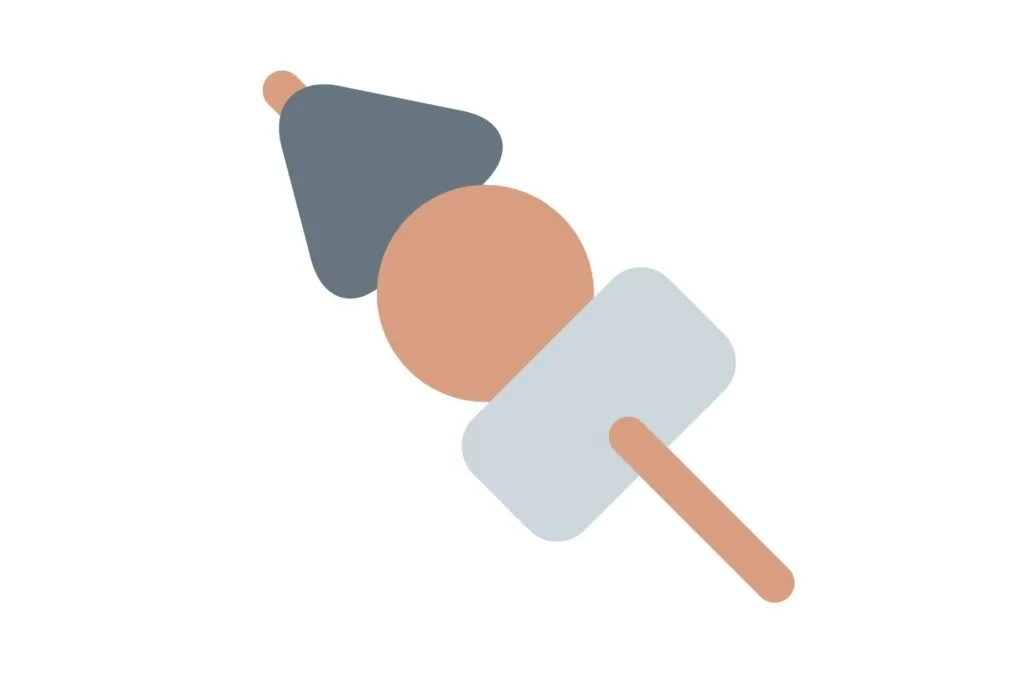
Oden is a type of nabemono (things you put in nabe). The ingredients can be added to basically any winter hot pot or broth you like, but it is also a dish in and of its own right, and usually includes a variety of fish balls and cakes, konnyaku (konjac), daikon radish, tofu-wrapped mochi, hard-boiled eggs, deep fried tofu with finely chopped vegetables, gobō-ten (a deep-fried fish cake with burdock root in the center) and sinewed beef, which are all simmered in a soy sauce-based broth.
You can easily find ready-to-eat oden at the convenience store, where you’ll typically find it in a vat by the cash registers with the other hot to-go food items. The oden emoji shows the ingredients on a skewer, with the distinctive triangle of the gray konnyaku on top, a convenient way to enjoy the dashi-infused nabemono without needing to sit down to a full soup.
Curry Rice
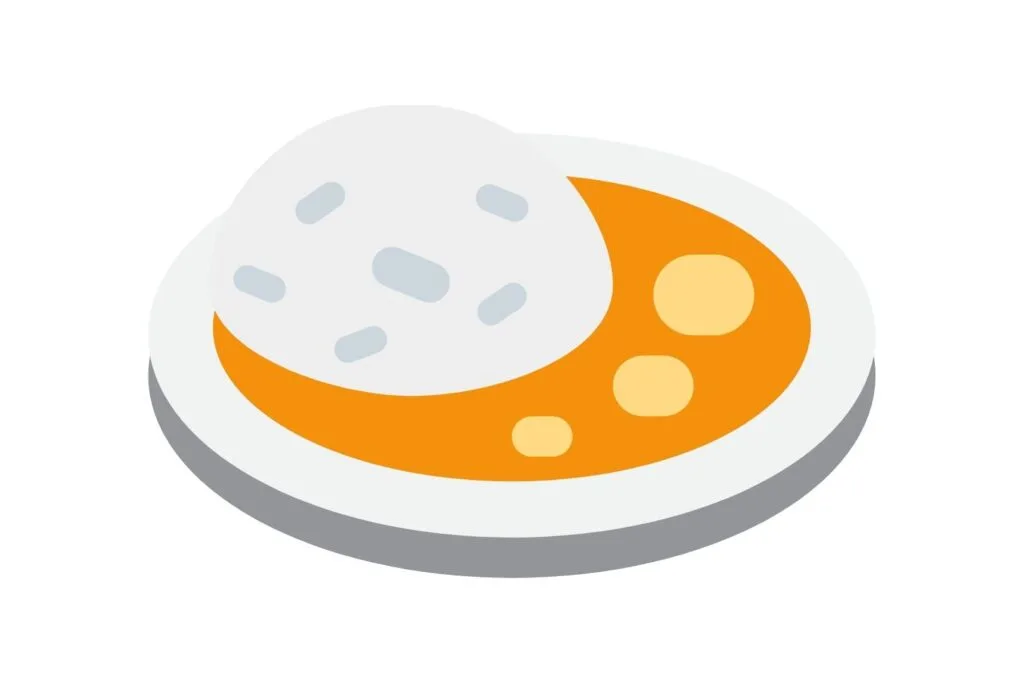
Curry may not have its origins in Japan, but Japanese curry rice has become so popular and distinct a dish that it’s now solidified itself as part of Japanese cuisine, and warranted its own emoji.
As the name suggests, the dish comprises of curry with rice, but Japanese curry is quite different to other curries you may have tasted. It’s generally very mild and even on the sweet side, and thanks to curry roux (blocks of solidified curry) being easily available at any supermarket, it’s a super simple dish to make for an easy and cost-effective lunch or dinner.
Japanese curry typically includes potato, carrot and onion, along with sinewed beef, served with some red-pink pickled ginger, which you can see depicted in the emoji on some devices. Another favorite is katsu karē, which is slices of tonkatsu (deep-fried pork cutlets) with curry sauce over rice.
Senbei
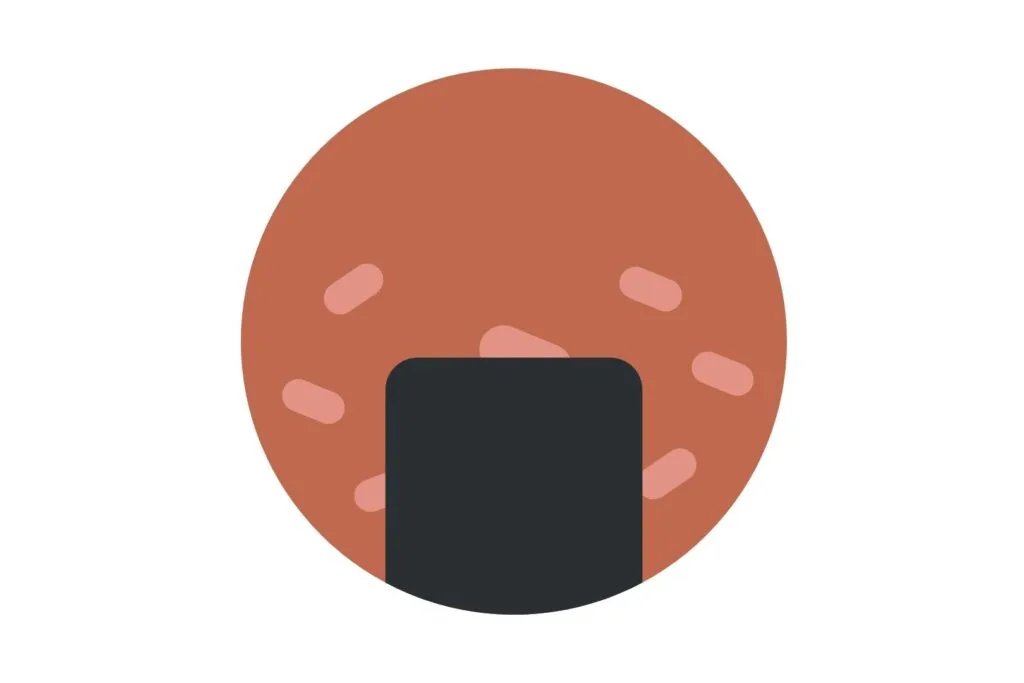
Senbei (also written and pronounced sembei) is a rice cracker. There are many varieties of this traditional Japanese snack, which can range from savory to sweet, and is a popular accompaniment to green tea and beer.
Senbei are traditionally cooked over charcoal and brushed with a sauce (such as a combination of soy sauce and a sweet low-alcohol rice wine vinegar called mirin). The emoji depicts the brown senbei with a piece of nori seaweed wrapped around the base. This is not only a tasty combination, it prevents one’s fingers from getting sticky when buying freshly-made senbei that have just been basted in the sauce.
Narutomaki
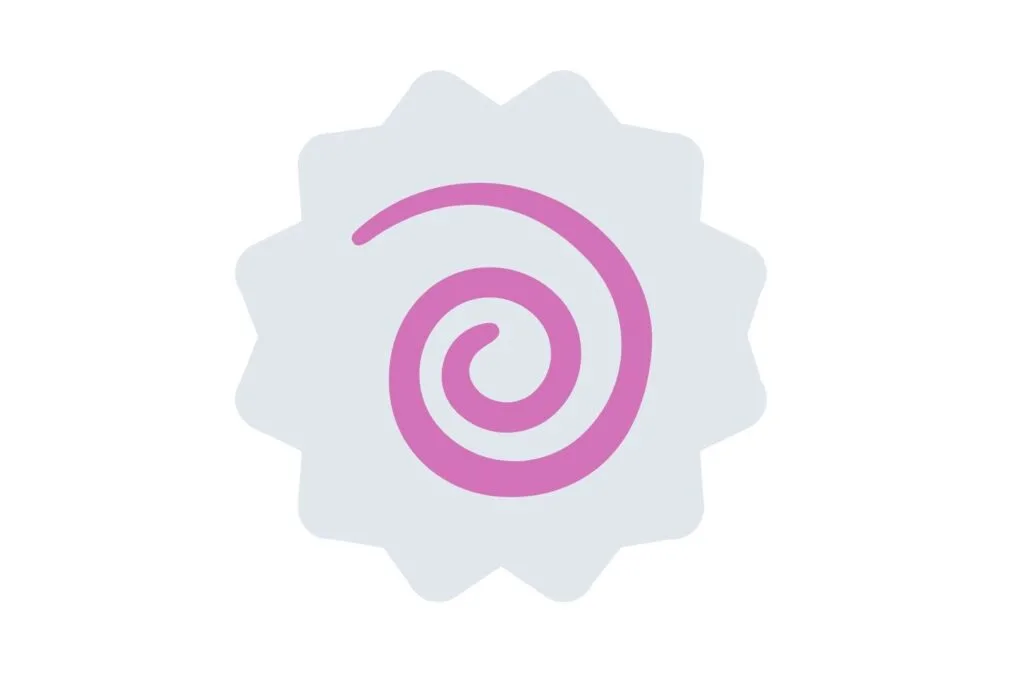
You might know narutomaki as that white “cloud” with a pink swirl that is a typical topping for ramen. It’s a type of kamaboko (fish cake) made of cured surimi paste.
It gets its name from the Naruto tidal whirlpools in the Naruto Strait, a channel between Naruto in Tokushima and Awaji Island in Hyōgo, that produce a distinctive swirl in the water. It’s a popular tourist attraction with visitors able to look out and down to the sea below via a glass viewing platform.
Dango
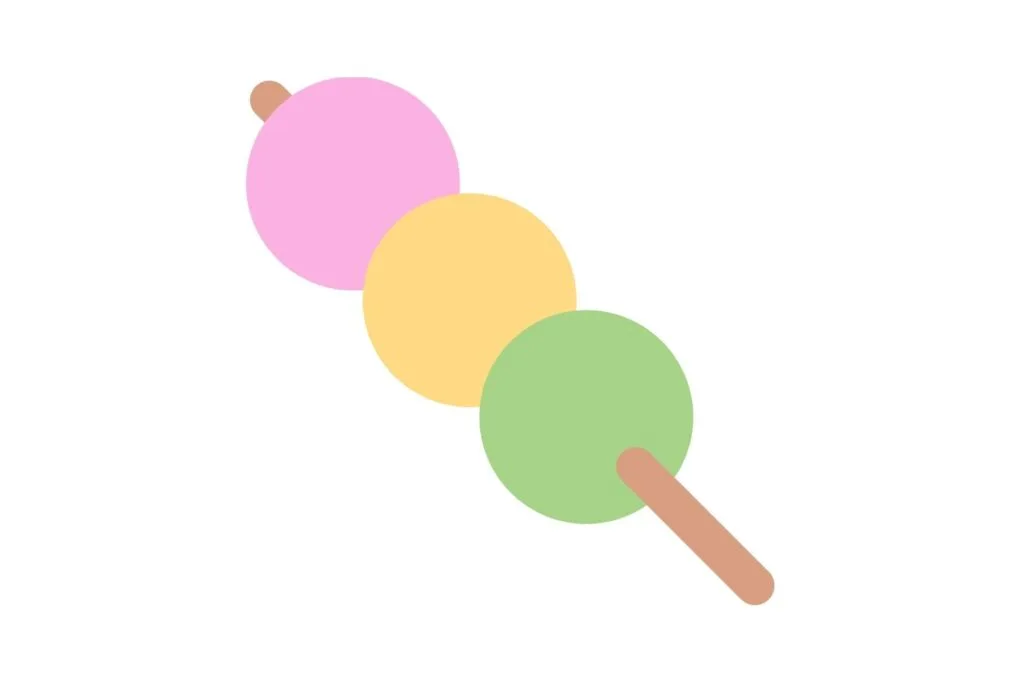
Dango refers to glutinous rice dumplings. They are usually placed on skewers in sets of three or five and can be anywhere from salty to sweet depending on type.
The dango used in emoji is called “Hanami dango”. It’s a traditional sweet and is a set of three dumplings in three different colors (pink, white and green).
They can be eaten all-year-round but are most popular during spring, specifically during cherry blossom viewing or “hanami” after which it is named. At this turning point in the seasons, moving from winter to spring and into summer, the pink represents the blooming cherry blossoms, white the winter snow (which appears yellow in this depiction), and green the summer grass.
Sake
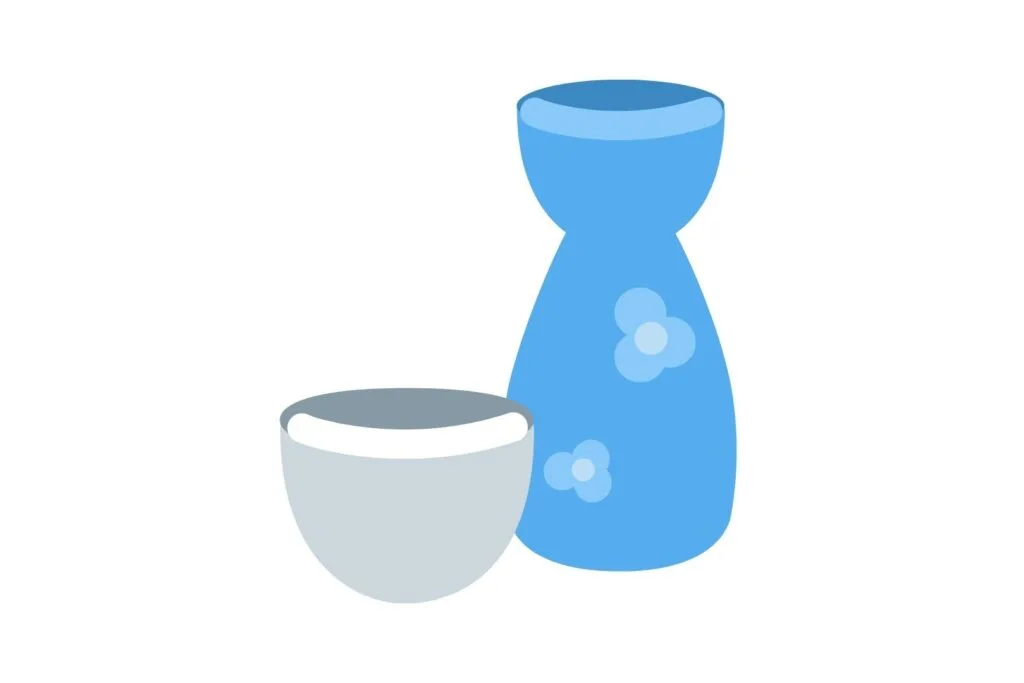
This emoji represents the Japanese alcoholic drink known internationally as sake, with a sake cup pictured next to a tokkuri, a vessel that is used for pouring sake.
What we call sake in English is actually called nihonshu in Japan, a fermented liquor made from rice and often translated as “Japanese rice wine”. Its literal translation is actually “Japanese alcohol” which gives you a sense of just how integral it is to Japanese culture. It is also why Japanese speakers will often call it Japanese sake in English, as opposed to just sake, which can refer to any alcoholic beverage.
Matcha
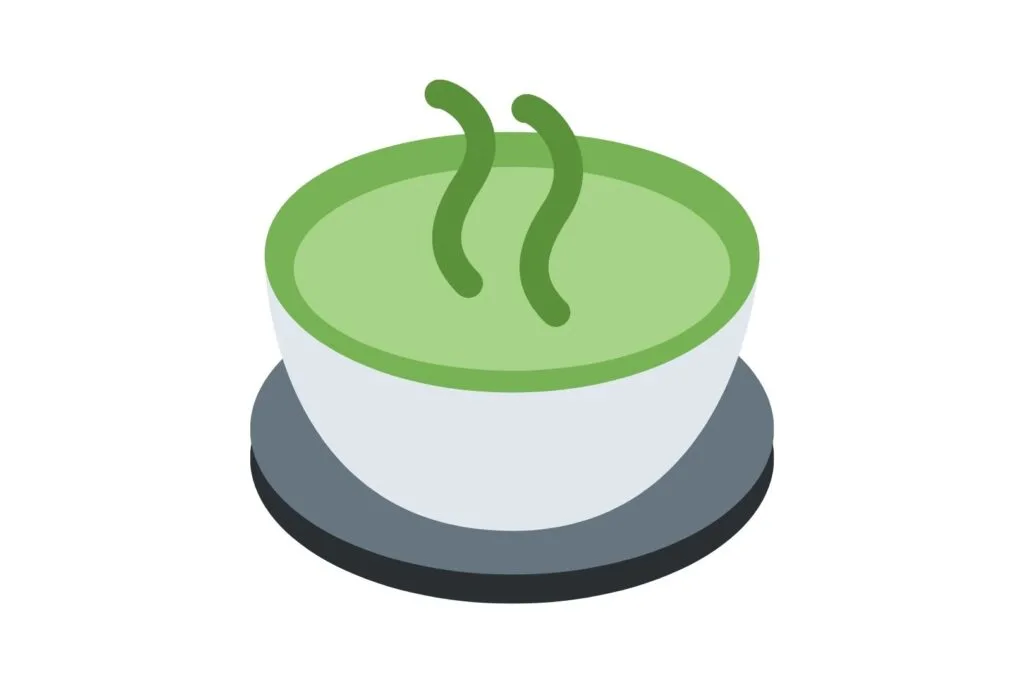
Another distinctly Japanese beverage is featured by way of the “green tea” emoji. In a small tea cup with no handles, we can see a cup of matcha made from young tea leaves that have been ground into a fine powder.
Matcha powder has a number of uses, including as an ingredient in desserts and for making tea. Matcha can be steeped or whisked to create a frothy drink, often with a slight bitterness that makes it the perfect accompaniment to something sweet. It is typical to be served matcha green tea with a traditional Japanese sweet during tea ceremony.
Ebi furai
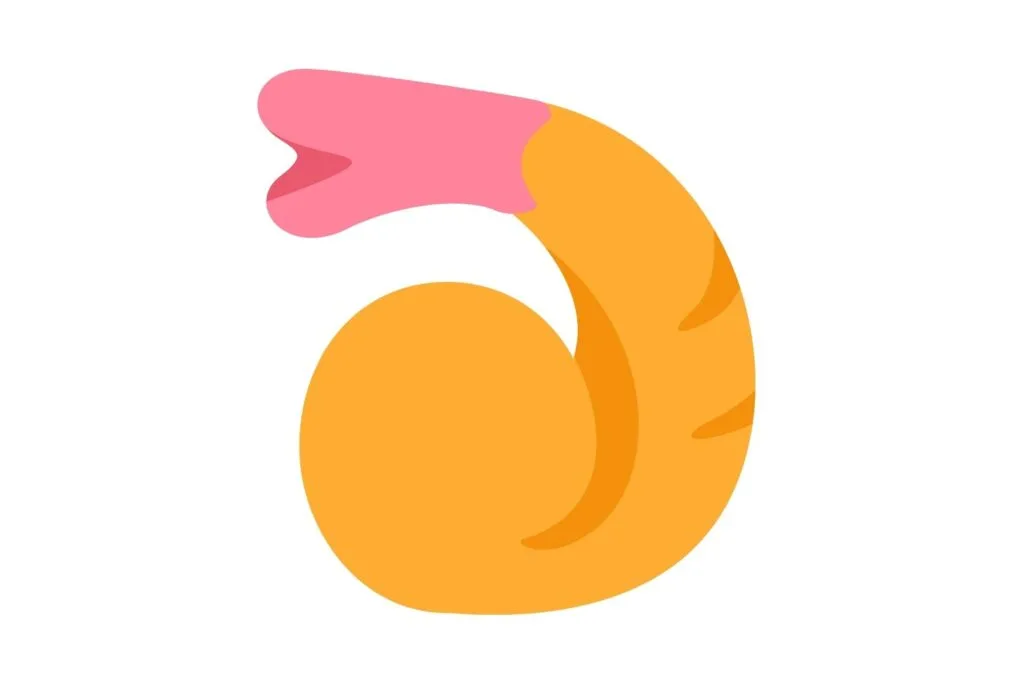
Ebi furai (‘furai’ being the Japanese way of writing the English word “fry”) refers to a shrimp that has been coated in batter and then deep-fried. This style of cooking is known as tempura and is a popular way of cooking not only shrimp but also fish and vegetables.
You’ll find ebi furai in many tempura dishes and as a topping for ramen. Shrimp is considered an auspicious ingredient in Japanese culture as its arched shape and antenna are said to mimic the lean and whiskers of an elderly person. It is therefore associated with longevity and is eaten as part of Japanese New Year food customs to wish for a long life.
Onigiri
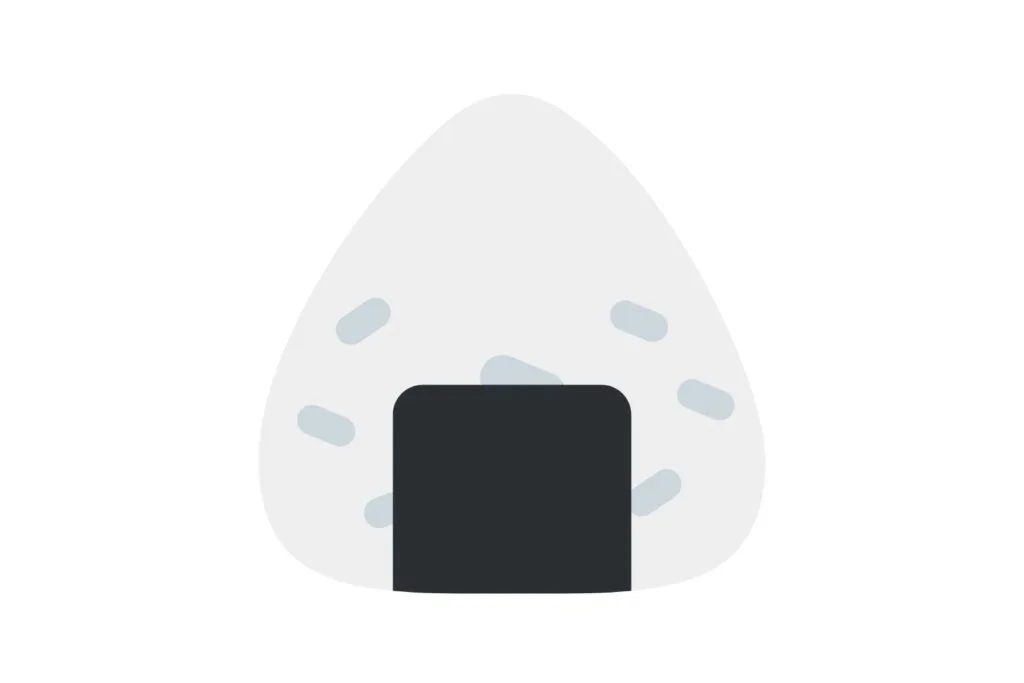
Onigiri is quite simply rice that has been packed together, making it an easily transportable and easy to eat snack. Referred to as a “rice ball” in English, it can really be any shape, but is usually round or in a distinctive triangle form.
You’ll see an array of types at the konbini (Japanese convenience store). Most use white rice and have a filling on the inside, such as tuna and mayonnaise, or salmon, and have nori seaweed on the outside. Others use different kinds of rice or an ingredient mixed throughout. You can even get a simple salted white rice.
Onigiri is popular as a more filling and energy sustaining snack (or even as a whole meal if you eat more than one), that’s easy to toss into your bag and go, making it a popular choice for hiking.
Tofu on fire
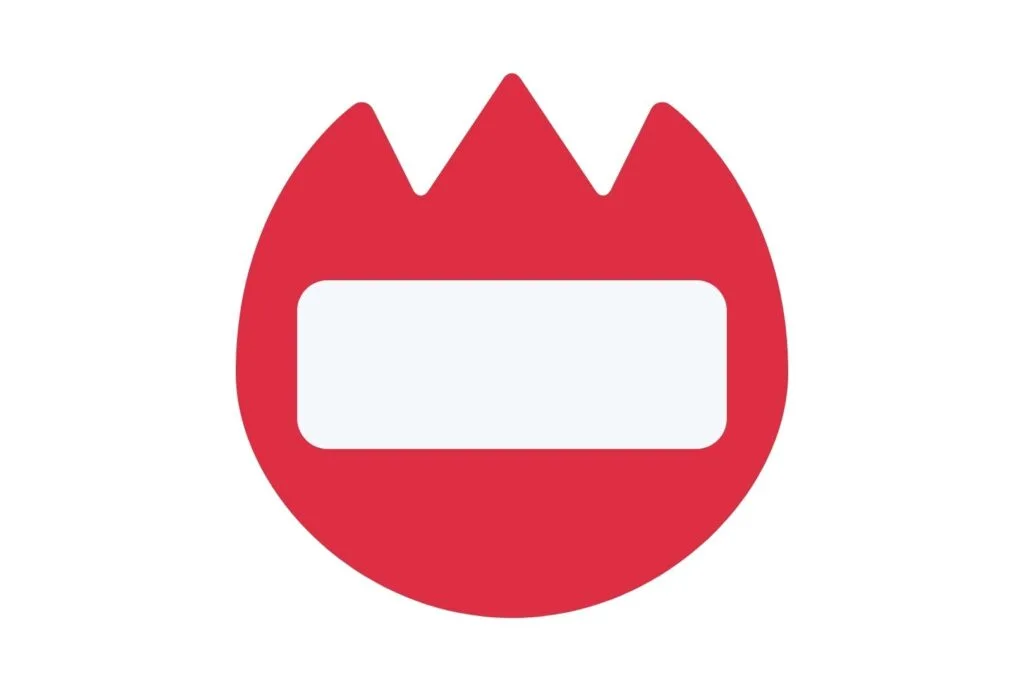
This emoji, often referred to as “tofu on fire” or “tofu fire”, is a classic case of lost in translation. The white rectangle is supposedly the tofu and the red around it with the jagged edges at the top could be mistaken for flames. The idea that this would be a common enough occurrence to warrant its own emoji is somewhat comical.
The real story is that this emoji has nothing to do with food at all. It’s actually a tulip-shaped name badge, typically used in Japanese preschools!
Eggplant/Aubergine
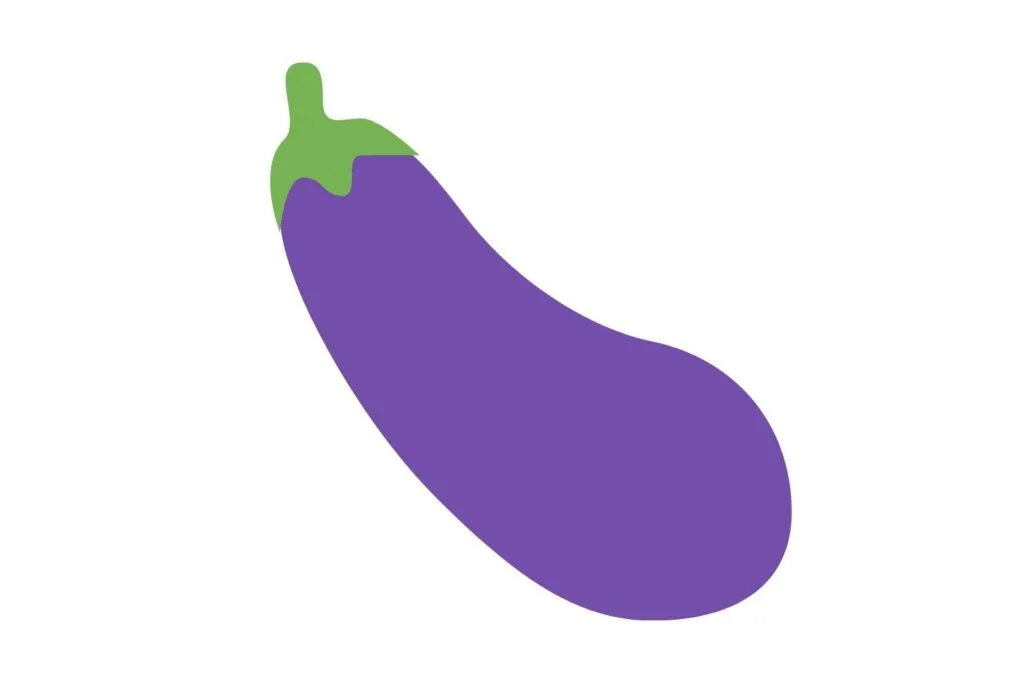
The world can also thank Japan for the way in which emoji language has developed based on the items that Japan first depicted. While the eggplant is not a Japanese specific food, it was one of the emoji that was inherited from the Japanese emoji keyboard.
You may be thinking that you already know the secret meaning behind this bulbous purple vegetable emoji, but in Japan the eggplant is more than a vegetable symbol too. In Japanese culture, it’s considered lucky to dream of Mount Fuji, a hawk and an eggplant on the first night of the New Year. This first dream of the year is called hatsuyume.
It’s not known exactly where this superstition originated, but one common theory about why this particular combination is considered auspicious is because Mt Fuji is Japan’s tallest mountain, hawks are strong and clever birds, and the Japanese word for eggplant (茄子, nasu or nasubi) is a homonym for achieving something great (成す, nasu).
Another theory relates to Tokugawa Ieyasu, the founder and first shogun of the Tokugawa shogunate (in a period known as the Edo era), who was apparently fond of Mount Fuji, falconry and early eggplants. The superstition is believed to date back to this period, which commenced in 1603.
Today it continues to be memorized as Ichi-Fuji, Ni-Taka, San-Nasubi (1. Fuji, 2. Hawk, 3. Eggplant) and is the reason why Japan thought it important to include an eggplant in its emoji, and why it is now part of international online communication, albeit with a different connotation.
Interestingly, emoji have been around for so long in Japan that they are now actually seen as old-fashioned, with the trend being more towards using services like LINE and their range of ‘stickers’ over emoji.
Do you use emoji? Were you surprised by the history and actual meaning of these Japanese food emoji? Tell us your favorite one in the comments!
Pin me for later
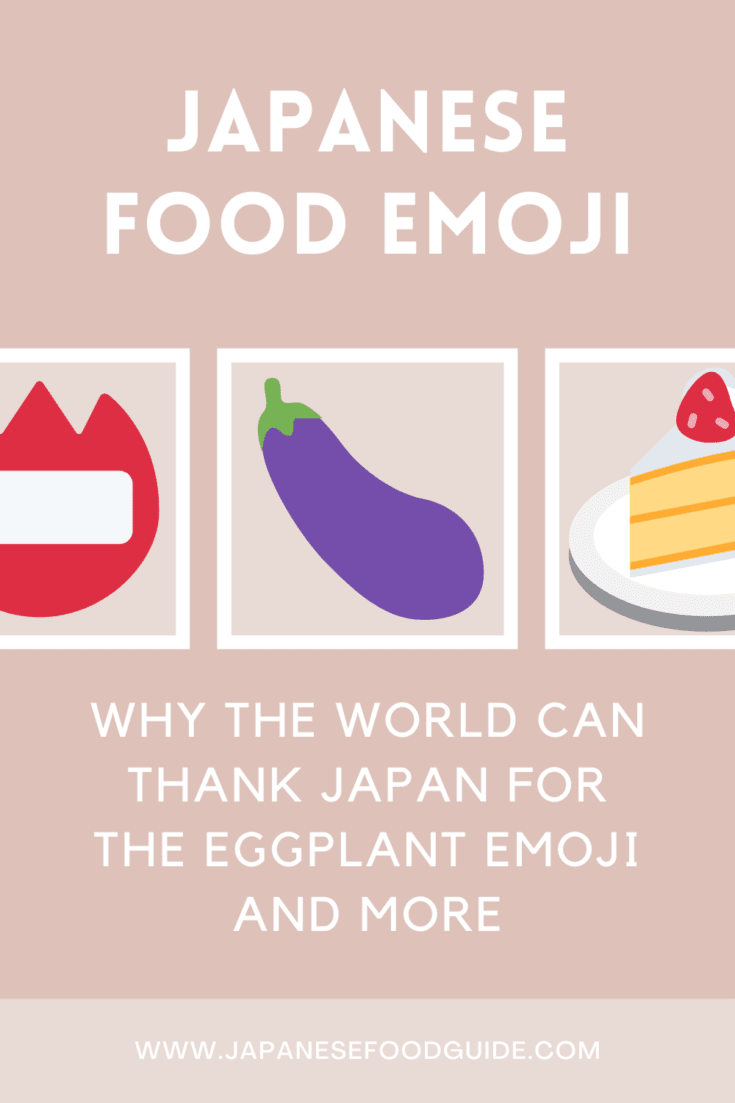
Jessica Korteman is a seasoned travel writer from Melbourne, Australia. She has spent a decade living, working and traveling in Japan, and specializes in Japanese culture, festivals and events, and travel destinations both on and off the beaten path throughout the country.
She is the Founder and Editor of Japanese Food Guide.

Kaori
Tuesday 1st of February 2022
This is such a fun article! And all these years, I never knew there was an oden emoji...so many missed opportunities in past instagram captions ;D
Barbara
Friday 31st of December 2021
Thank you for the info on emojis. I use them all the time and now I know what they mean lol. With a Grandaughter at University in Japan I have learned a lot about Japanese Cuisine and love most of it. I am looking forward to your newsletters and will pass them in to my Granddaughter.
Jessica Korteman
Saturday 22nd of January 2022
@Barbara, thank you so much for your comment! Thrilled that you are enjoying your journey learning about Japanese cuisine and that this article helped uncover the true meaning of these emojis for you.
Thank you for joining the newsletter - so happy to have you (and your granddaughter by association) as part of our growing group of Japanese food enthusiasts. Looking forward to connecting more as time goes on.